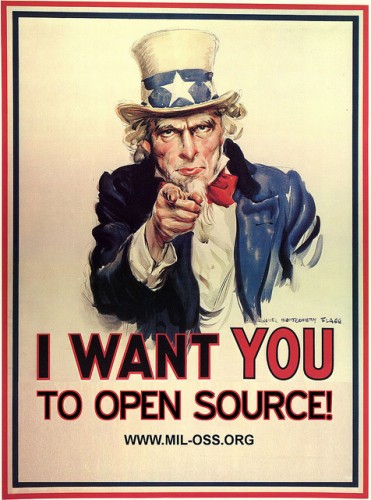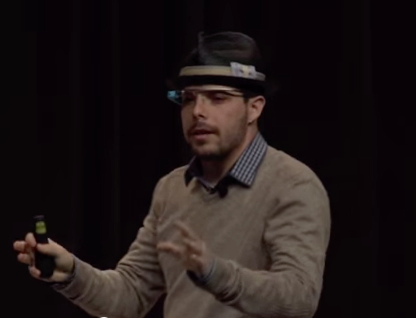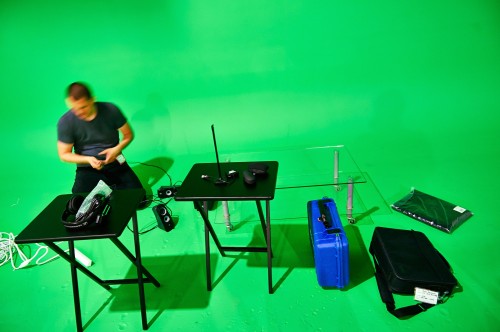
I was scrolling through Tumblr the other morning (like I do) when I came across “the world’s tallest slum.” Located in downtown Caracas, an unfinished 45-story skyscraper that was supposed to host Venezuela’s business elite is now home to an estimated 3,000 squatters. The “Tower of David” (named after finance tycoon that started and abandoned the project) is now owned by the state but there are no government-provided utilities. The building is, in essence, not much more than an immense concrete frame, upon which the residents have begun to build a community. They pool money to pay for building security, there are bodegas on every floor, and water and electricity reach as high as the 22nd floor. This is no small feat of engineering or human organization, but it isn’t comfortable living either. I don’t think it would be romanticizing the living conditions of these people to say that they (and no one else) have made something that is both modest and remarkable for themselves. Abandoned by both private industry and the government, some people pooled their limited resources and made their lives a little more livable. Zulma Bolivar, a Caracas City planning official in an interview with the New York Times described the situation in one sentence: “This tower is a perfect example of anarchy.”
I’m not completely sure if Bolivar is using “anarchy” as a term of derision or as an accurate descriptor for the kind of politics that makes The Tower of David work. At its heart, that’s all anarchism is: the willingness to cooperate freely and the desire to see a day where all human needs are fulfilled through that voluntary cooperation. It’s utopian thinking that doesn’t let the thinker get away with discussing ends without also dealing with the means. The fact that a bunch of people were able to make 22 floors of poured concrete into several thousands small homes is a much better case for anarchism than any Kropotkin quote I can muster up.
The Tower of David is not a DIY skyscraper. It is not a rhizomatically up-cycled crowd tower. It is nothing more or less than people cooperating out of a shared desire to fulfil their own needs by and through the helping of others. I don’t want to devalue that work by applying goofy Richard Florida buzzwords to it, but there are some unmistakable similarities between the anarchistic relationships that turned an abandoned building into a thousand homes, and the organization structures that produce Free and Open Source Software (F/OSS).
I’m not asking Debian developers to start quoting Emma Goldman, but they do need to stop pretending that their work is apolitical. The way they organize work is a huge deal: it represents a very evolved and refined way of establishing working relationships while also maintaining individual autonomy. But what is accomplished with this organizational structure? F/OSS makes exceptional corporate utility software: most of the corporate sites and web services you use run on Apache or Nginx, but rarely do we ever get software or services that are made for individuals. We never get a phone or a social media network that blows the corporate competition out of the water. F/OSS isn’t apolitical, it sided with the 1%.
The Tower of David (and most free software) is what Bruno Latour would call a “Theater of Proof,” something that makes a persuasive argument through example. Your argument doesn’t necessarily have to appeal directly to morals, ethics, or some other abstract principle; you get past the “shoulds” and instead proudly display the “what can bes” of the matter. It is a kind of pragmatic, brass tacks debating style that I have come to really admire as I pursue a social science Ph.D. at an engineering school. And I know this practice is fairly popular among open source developers and engineers because Biella Coleman (who I believe is the first to apply Latour’s concept to these communities), Chris Kelty, and others have witnessed similar styles of argument in their own research. I also know, having read these authors, that F/OSS communities really don’t want to pledge allegiance to any kind of spot on the political spectrum. I understand the tactical and rhetorical reasons for acting apolitical, (Google wouldn’t make up 98% of Mozilla’s income if the latter was avowedly and loudly anti-capitalist) but none of those justifications make it true. Every time a Fortune 500 company updates to the new version of Apache, the open source community demonstrates its politics.
It isn’t enough to say that software is a tool, and you can’t help it if you make a really useful tool and a corporation uses it to make a profit. The average person doesn’t have a use for complicated backend server software. They do need a social media network that isn’t out to exploit them for profit. The failure of the F/OSS community to come out with a polished, user-friendly, and user-run social media network, while Facebook run’s on open source server software is confounding. This arrangement turns inexcusable when those same people demand that other’s learn to code if they want to take full advantage of what F/OSS has to offer. At the very least, F/OSS usability and popular technological literacy should meet halfway.
 What does F/OSS have to offer the end user? I don’t want (but have) another Ouya. I started using Zotero after my (very public) breakup with Mendeley but not a day goes by that I don’t miss the polish and reliability of what Elsevier stole from me. Firefox was a great “not Internet Explorer” but has been losing users since 2010. Linux, while getting more and more user-friendly by the day, still isn’t for most people. Open Office is for people who can’t or don’t want to buy/pirate “the real” office. With the exception of WordPress and VLC I can’t think of a single, mainstream product that people just choose to use because it is better than the competition. This isn’t a good sign, especially if you believe in the liberatory potential of F/OSS and you do most of your arguing in the Theater of Proof.
What does F/OSS have to offer the end user? I don’t want (but have) another Ouya. I started using Zotero after my (very public) breakup with Mendeley but not a day goes by that I don’t miss the polish and reliability of what Elsevier stole from me. Firefox was a great “not Internet Explorer” but has been losing users since 2010. Linux, while getting more and more user-friendly by the day, still isn’t for most people. Open Office is for people who can’t or don’t want to buy/pirate “the real” office. With the exception of WordPress and VLC I can’t think of a single, mainstream product that people just choose to use because it is better than the competition. This isn’t a good sign, especially if you believe in the liberatory potential of F/OSS and you do most of your arguing in the Theater of Proof.
I know you, dear developer, use Open Office and Gimp because it doesn’t have the feature bloat that all the sheeple think they need. I know it’s frustrating that Ubuntu Linux had an app store years before Apple ever did, and yet it is the latter that gets all the praise. The kids today don’t even remember that Firefox invented tabbed browsing. I know Zotero works perfectly fine for thousands of people, but for the millions more that can’t or have absolutely no desire to install and configure plugins for basic functions like PDF sorting and renaming, it doesn’t. For many people, even technologically literate people like myself, choosing open source feels like the tech equivalent of eating organic: if you can afford the time and expertise costs you can opt into this DRM and ad free utopia where you have total control over your privacy and the user forums are actually useful. That’s not good enough.
I know I’ve made a bunch of generalizations so far. Community standards differ between F/OSS projects and many of them do the kind of work that I’m calling for. Maybe WordPress is what open source social networking looks like. Perhaps I’ve under-estimated or given too little credit to “ICT4D” projects like FrontlineSMS that let people do new things with tried-and-true technologies. And I’m sure I’ve caused lots of people to shout “What about Wikipedia!” at their device screens. Indeed, Wikipedia is an immense success story, and yet it is still far easier to leave a comment on a Wal-Mart item description than edit a Wikipedia entry. Even tech evangelists like Kevin Kelly will admit that a group smaller than my high school incoming class are responsible for almost all of the editing.
What’s most frustrating though, more than anything, is that F/OSS appears to be the answer to all the things we dislike about our networked experiences. More open and collectively managed alternatives to Facebook and Android should be thriving right now. Companies that manipulate and experiment on us aren’t a necessary evil for a networked society. Device manufactures that lock you into a walled garden of planned obsolescence are not a fact of digital life. Deeply configurable and ownable devices and networks should not be the providence of only the people that have the expertise to build the private ones for the rest of us.
These frustrations could go away if F/OSS started prioritizing things like user interface design and gave serious consideration to ownership models outside of classic corporations. Like the Tower of David, we could start building a new web from tattered remnants of the old Net. It’d be a web that returns value to its users in the form of better services or even cash rewards. Just as Mozilla was set up to foster and develop what AOL was no longer willing to pay for, can’t we cobble together something greater than the sum of its parts? Can’t developers do something half as cool as turning an abandoned building into a community?
Pardon the neoliberalist framing but, if we were to treat technological literacy as currency then we are faced with anarchism for the rich and capitalism for the poor. Through this lens it’s hard to read “learn to code!” as anything other than a call to bootstraps. It is the kind of elitism that can only come from people who deny their own elite status or their complicit role in an unjust status quo. What is needed now, perhaps more than anything, is a little bit of overt politics from the F/OSS communities that nurture and develop the world’s software. Maybe its time to stop maintaining the software that makes Amazon run and start building something new for the rest of us.










